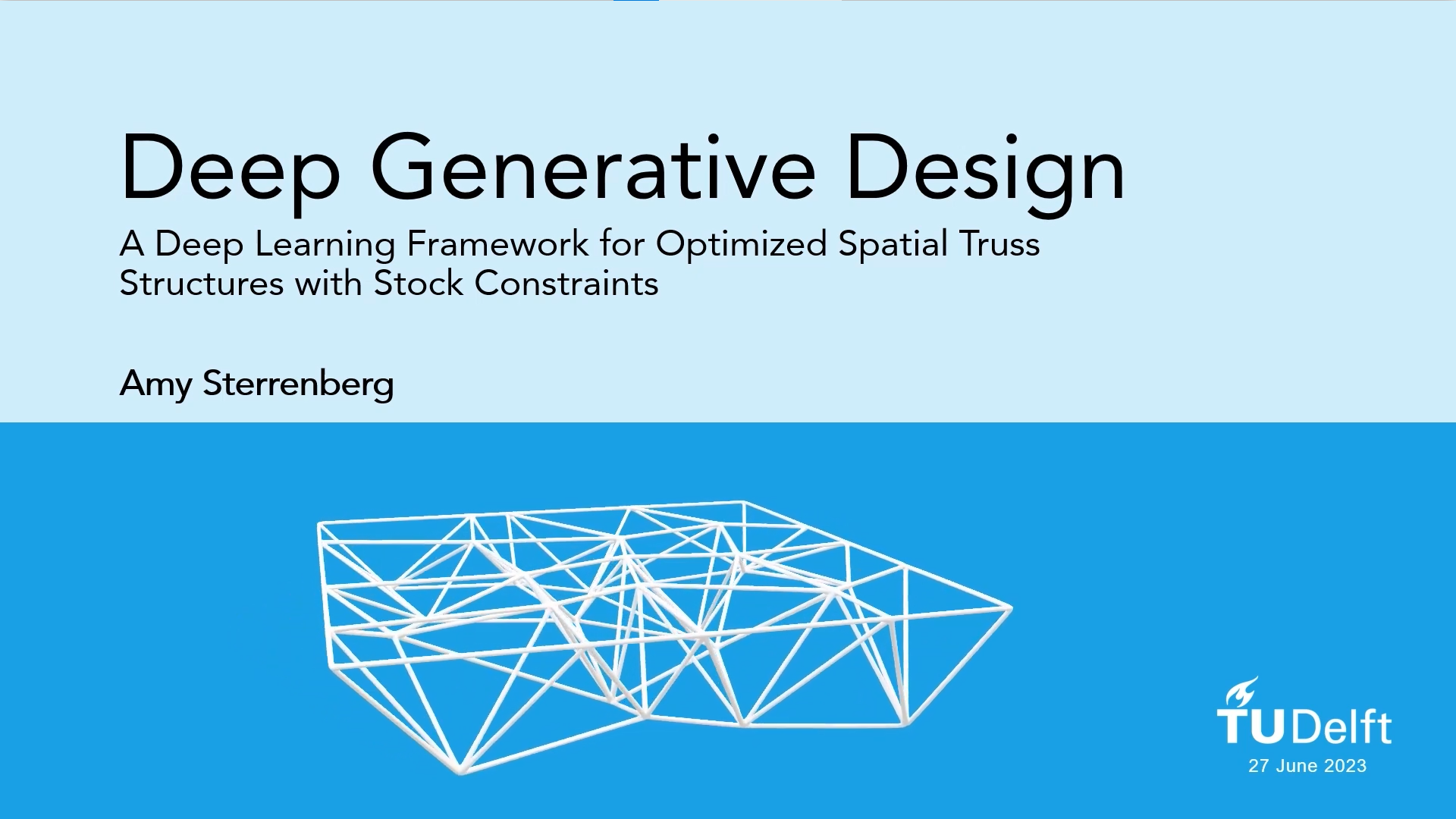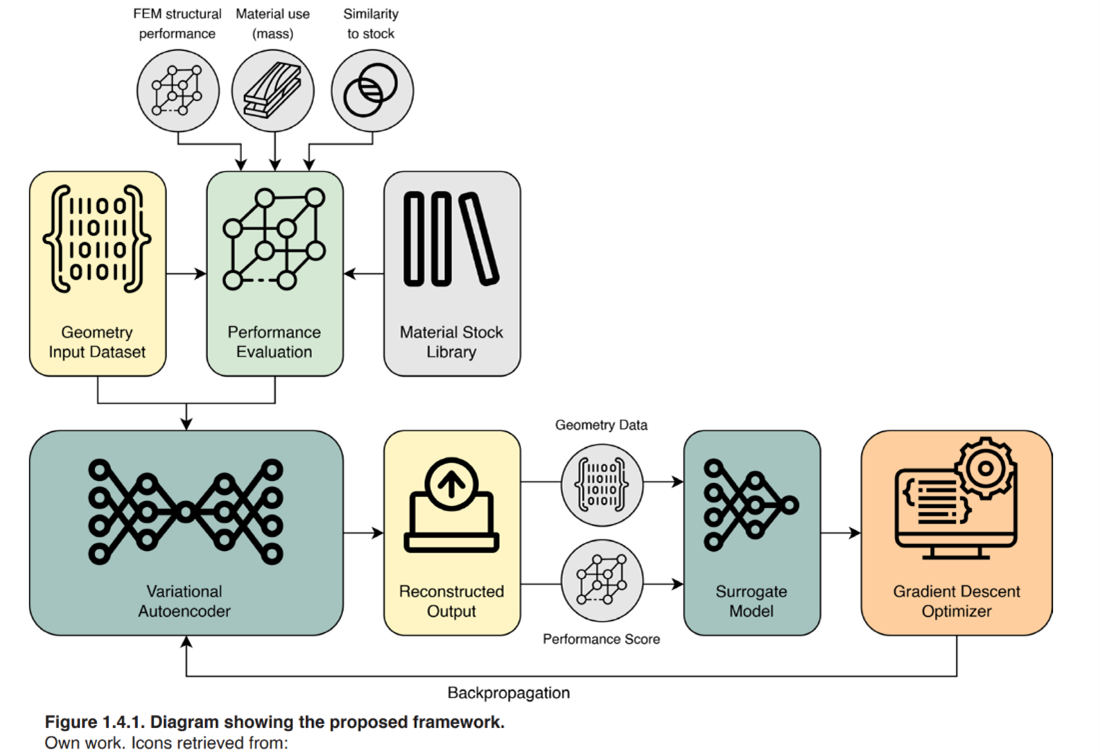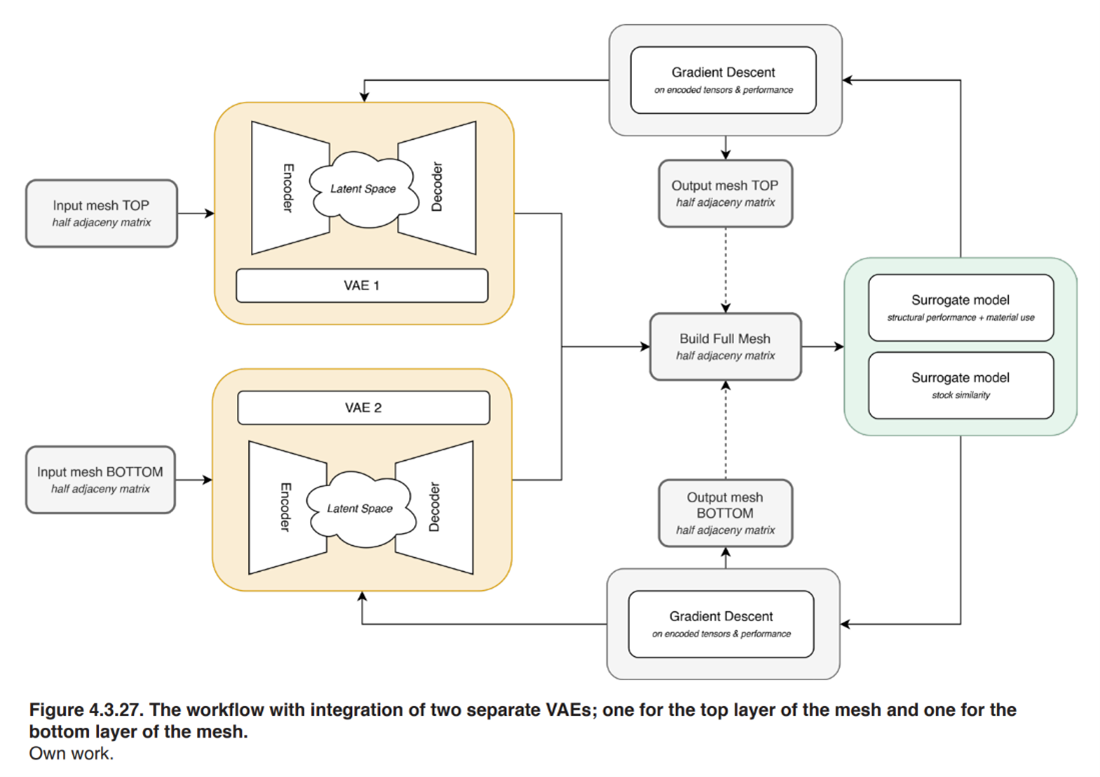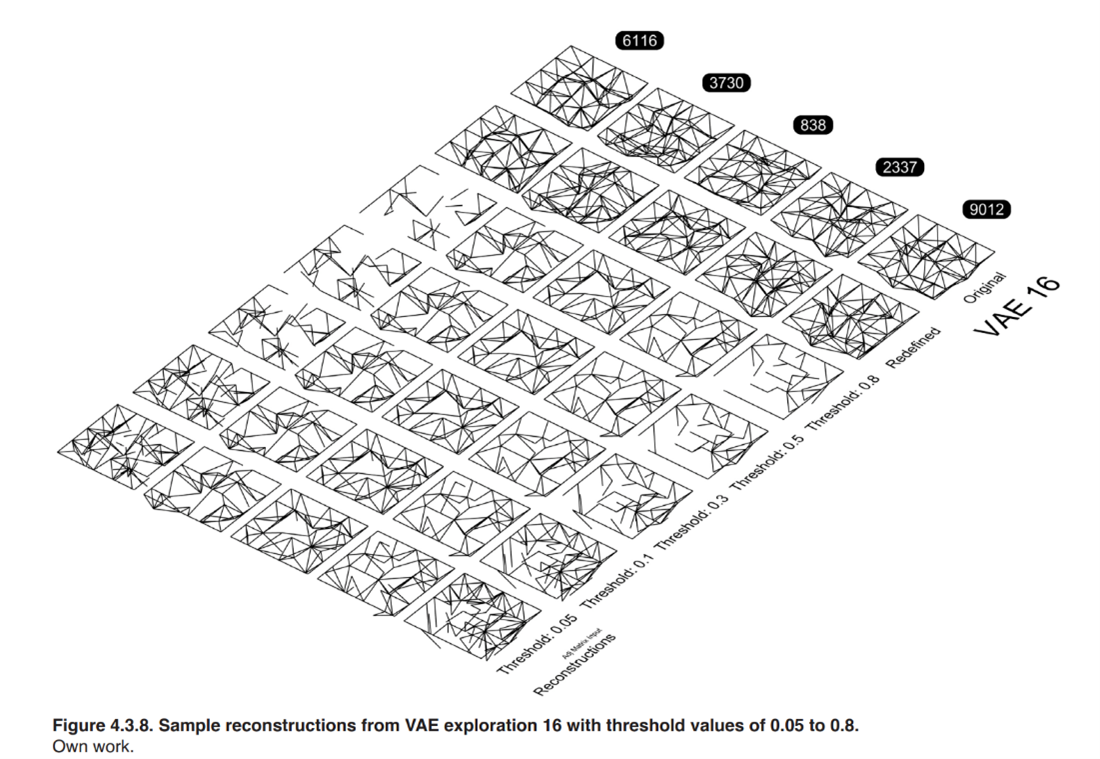Thesis: Deep Generative Truss Structures – Sterrenberg
-
Intro
-
Technical Aspects
Information
| Primary software used | Jupyter Notebook |
| Course | Thesis: Deep Generative Truss Structures – Sterrenberg |
| Primary subject | AI & ML |
| Secondary subject | Machine Learning |
| Level | Advanced |
| Last updated | November 27, 2024 |
| Keywords |
Responsible
| Faculty |
Thesis: Deep Generative Truss Structures – Sterrenberg 0/1
Thesis: Deep Generative Truss Structures – Sterrenberg
A Deep Learning Framework for Optimized Spatial Truss Structures with Stock Constraints by Amy Sterrenberg
Energy use, CO2 emissions, and waste production are all significant causes of environmental issues. The building sector is a major contributor to these problems, specifically the manufacturing of (structural) steel elements. Application of reuse and/or remanufacturing, as done in a circular economy, will reduce these effects. Therefore, these techniques must to be taken into account while designing buildings and structures. However, as actors in the construction industry recognize barriers, such as time delays in the early phases of the design process, these tactics are not yet commonly used. Nonetheless, reusing structural steel components is still favoured by structural engineers, particularly when the aforementioned obstacles can be removed. This is feasible with the use of computational tools. In this thesis, an AI based deep generative design framework is developed to optimize a 3D spatial truss structure for structural performance, material use and similarity to a defined stock of reusable materials. This workflow consist of a labelled dataset of geometries and performance indicators, a variational autoencoder (VAE), a predictive surrogate model and optimization through gradient descent. The aim of this study is to gain insight into the extent to which such a workflow can be applied in early-stage architectural and structural design exploration, especially with regards to making circular design & reuse more feasible. The case study in this thesis is a spatial truss structure supporting a flat roof. It was found that a surrogate model can be successfully trained to predict the performance of a geometry. For this, various input data representations can be used, including adjacency matrices and edge-vertex matrices. Through training of a VAE, a latent space from which meshes could be generated was successfully constructed. The VAE was able to accurately reconstruct a significant part of the geometry dataset. Through gradient descent, novel meshes were generated. Predicted performance of these meshes was increased. After assessing performance with simulations and calculations, increases in performance often remained. The largest performance increase found was 74.2%. Minor editing of meshes based on user insight demonstrated further increase in mesh performance.

APA: Sterrenberg, A. (2023). A Deep Learning Framework for Optimized Spatial Truss Structures with Stock Constraints [Master thesis, TU Delft]. https://repository.tudelft.nl/record/uuid:089c0e3f-9c87-4087-b919-ae86d20342a9
Here you can find the repository of the master thesis ‘A Deep Learning Framework for Optimized Spatial Truss Structures with Stock Constraints’.
Project Information
- Title: A Deep Learning Framework for Optimized Spatial Truss Structures with Stock Constraints
- Author(s): Amy Sterrenberg
- Year: 2023
- Link: https://repository.tudelft.nl/record/uuid:089c0e3f-9c87-4087-b919-ae86d20342a9
- Type: Master thesis, Building Technology
- ML tags: Variational Autoencoders, Generative Design, Surrogate Modelling, Gradient Descent Optimization, Neural Networks
- Topic tags: Generative Design, Structural Design
Thesis: Deep Generative Truss Structures – Sterrenberg 1/1
Technical Aspectslink copied
In this thesis, the writer develops a workflow for early-stage design of 3D spatial truss structures. This is achieved by optimizing the structure based on structural performance, material use, and similarity to a defined stock of reusable materials (library) through a deep generative design framework.
Software & Plug-ins Used
- Rhinoceros, Grasshopper, Karamba for Structural performance evaluation
- Rhinoceros, Grasshopper and Python (within Grasshopper) for generation and processing of geometry dataset
- Python using the Keras API with TensorFlow for designing the deep learning models
Design Framework

The deep generative design framework has 4 components:
- Material library (defined stock)
- Generated dataset for training
- Structural evaluation of the dataset
- Variational Autoencoders (VAE), surrogate model & gradient descent algorithm
Case Study

As a case study, the non-curved triangular spatial truss of the Orange Hall and Model Hall of the Architecture and the Built Environment Faculty of TU Delft is used.
Workflow
To create this workflow, the following steps were followed:
- Creating an input dataset that contains different configurations of the spatial truss structure
- Measure the performance of the variations in the dataset through a simulation based on
- Structural performance
- Material use
- Similarity to the stock library
- Train a surrogate model with the simulations
- To train the VAE
- Generate a new data point (design) using the VAE
- Find optimal solutions though a gradient descent(GD) algorithm:
- Evaluate the structural performance of the new design with the trained surrogate model
- Update the VAE based on the analysis
- Continue training until the GD can identify the optimum solution from new generated geometries
Although not implemented in this thesis, an option to try to solve the same problem is as follows. A generative adversarial network (GAN) is another generative deep learning method that could be applied to the problem by using a combination of a GAN and a surrogate model to replicate the workflow, replacing the VAE with a GAN to generate and evaluate the meshes. LIMITATIONS: Most meshes produced by this workflow perform better than their original input under the same degree of design freedom, even though better outputs are predicted by the surrogate model for all meshes. SPECIAL NOTE: Full Grasshopper and Python scripts available in Apendix II of the thesis.

VAE exploration

Sample reconstructions from VAE exploration 16 with threshold values of 0.05 to 0.8.
Write your feedback.
Write your feedback on "Thesis: Deep Generative Truss Structures – Sterrenberg"".
If you're providing a specific feedback to a part of the chapter, mention which part (text, image, or video) that you have specific feedback for."Thank your for your feedback.
Your feedback has been submitted successfully and is now awaiting review. We appreciate your input and will ensure it aligns with our guidelines before it’s published.
